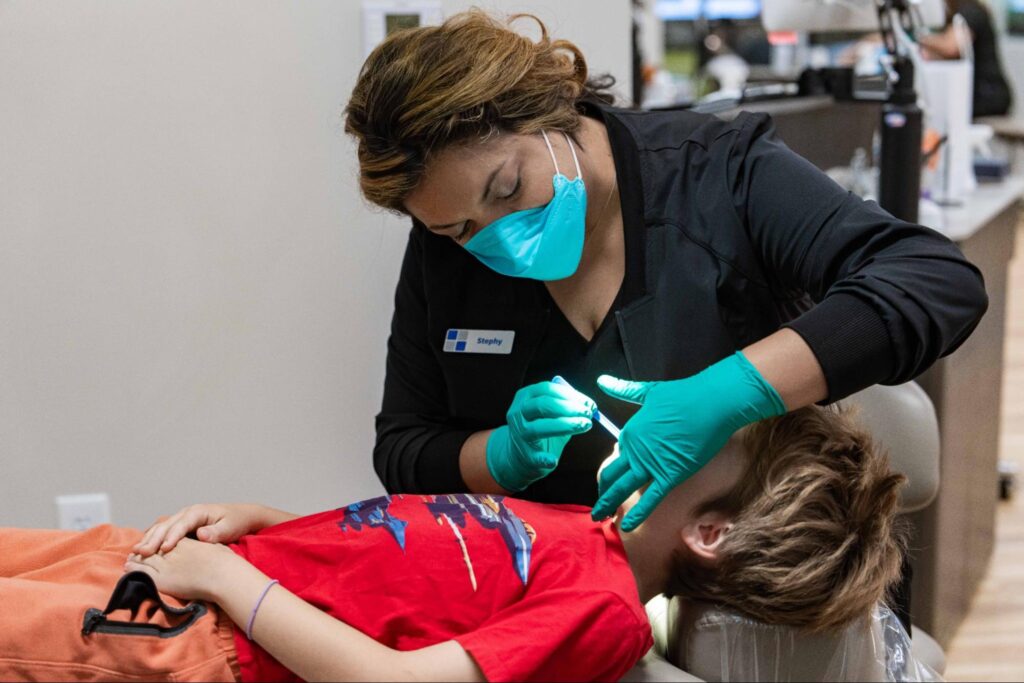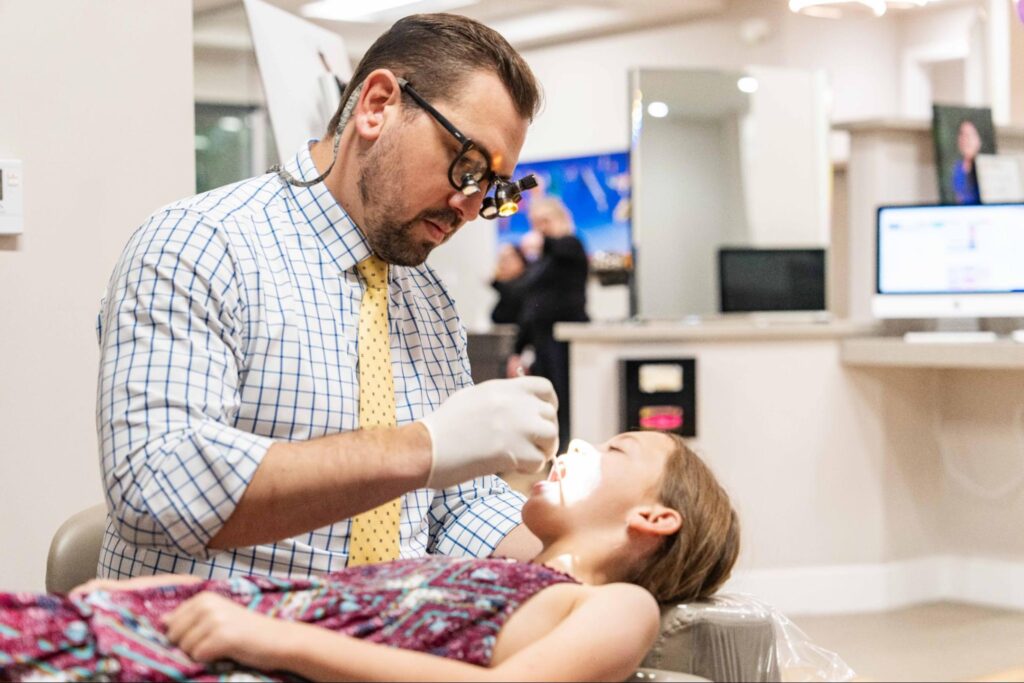Making sure your child gets enough rest is a priority, but what if their sleep isn’t as refreshing as it should be? Sleep apnea in children is more common than many people realize, and it can affect everything from their energy levels to their ability to focus during the day. If your child snores, breathes heavily at night or struggles with daytime sleepiness, it might not just be a phase; it could be a sign of sleep apnea.
At Serrano Orthodontics, Dr. Paul Serrano and Dr. Andrew Serrano can help address airway concerns that may be impacting sleep.
What Causes Sleep Apnea in Kids?
Studies suggest that 1 to 4 percent of all children have obstructive sleep apnea, but many cases go undiagnosed. In fact, some children diagnosed with ADHD may have sleep apnea, as the symptoms of both conditions can overlap. Children between the ages of 4 and 7 are particularly at risk, as their tonsils and adenoids are at their largest, which can contribute to airway obstruction during sleep.
Several factors can make a child more likely to develop sleep apnea. Some are physical traits they’re born with, while others are linked to health conditions or lifestyle factors.
- Enlarged tonsils or adenoids can partially block the airway during sleep, making it harder to breathe.
- Excess weight can put pressure on the airway, increasing the risk of obstruction.
- Family history plays a role, as children with relatives who have sleep apnea may be more prone to developing it.
- Certain medical conditions like Down syndrome or cerebral palsy can affect muscle tone and airway structure, raising the likelihood of OSA.
- Structural differences in the mouth, jaw, or throat—such as a naturally small airway or a larger tongue—can make breathing more difficult.
Having one or more of these risk factors doesn’t necessarily mean a child will develop sleep apnea, but it’s important to watch for signs that could point to a sleep-related issue.
Signs Your Child May Have Sleep Apnea
Not every child with sleep apnea will have the same symptoms, but there are some common red flags to look for.
Nighttime Symptoms
- Snoring that includes pauses, gasps, or choking sounds
- Restless sleep with frequent tossing and turning
- Heavy breathing, even when they aren’t congested
- A child with sleep apnea may adopt unusual sleep positions, such as sleeping with their head hanging off the bed, as their body attempts to improve airflow.
Daytime Symptoms
- Waking up groggy or struggling to get out of bed
- Frequent morning headaches
- Difficulty focusing or paying attention
- Hyperactivity or behavior problems
- Feeling excessively tired throughout the day
Some children with sleep apnea also experience bedwetting, night terrors, or even sleepwalking. Since many of these symptoms overlap with other conditions like ADHD, it’s easy to overlook sleep apnea as a possible cause. Unlike adults who often feel sluggish from poor sleep, children with sleep apnea may exhibit hyperactivity or behavioral problems. Unfortunately, it’s not uncommon for kids diagnosed with ADHD to be dealing with undiagnosed sleep apnea. If your child shows multiple signs, it may be worth discussing with Serrano Orthodontics.
How Is Sleep Apnea Diagnosed?
If you’ve noticed any of these symptoms, talking to Dr. Paul Serrano and Dr. Andrew Serrano is the next step. They might refer you to a sleep specialist or recommend a sleep study (polysomnogram).
What Happens in a Sleep Study?
During an overnight sleep study, doctors monitor:
- Oxygen levels and breathing patterns
- Brain activity and muscle movements
- Heart rate and snoring sounds
The process is painless, and while spending a night in a sleep center might sound intimidating, it can provide the answers needed to create an effective treatment plan.
Treatment Options for Sleep Apnea in Children
The treatment will be personalized, depending on what’s causing the sleep apnea.
When Enlarged Tonsils or Adenoids Are the Issue
If large tonsils or adenoids are blocking airflow, an ear, nose, and throat (ENT) specialist may recommend surgery to remove them. This procedure is common and often significantly improves sleep apnea symptoms.
When CPAP Therapy Is Needed
For some children, CPAP therapy can significantly affect their sleep quality. This treatment uses a machine gently pushing air through a mask to keep the airway from closing at night. It can take time for children to adjust to wearing the mask, but once they do, many sleep more soundly and wake up feeling more refreshed. For some children diagnosed with both ADHD and sleep apnea, addressing their sleep issues has even reduced the need for ADHD medication.
When Weight Plays a Role
For children whose sleep apnea is linked to excess weight, working with a doctor on a healthy lifestyle plan can be part of the solution. Even small changes in diet and activity levels can make a noticeable difference.
Other Potential Treatments
Nasal sprays or allergy treatments if congestion contributes to breathing problems
Dental or orthodontic devices to help reposition the jaw or tongue for better airflow. Expanders, braces, or other treatments may be recommended.
When to Reach Out
If your child snores often, has trouble staying asleep or seems unusually tired during the day, it’s worth looking into what’s causing the issue. Sleep apnea can affect more than just rest. It can impact mood, focus, and overall well-being.
Dr. Paul Serrano and Dr. Andrew Serrano at Serrano Orthodontics in Phoenix and Chandler can help determine if orthodontic treatment could make breathing easier and improve sleep quality. Set up a free consultation to get answers and set your child up for better rest and better days.



